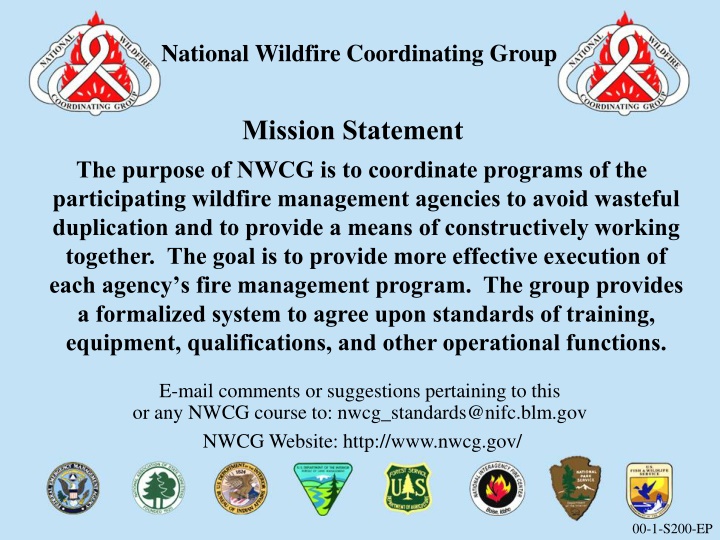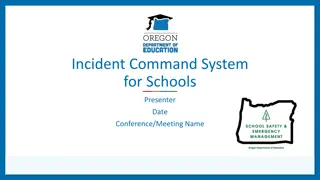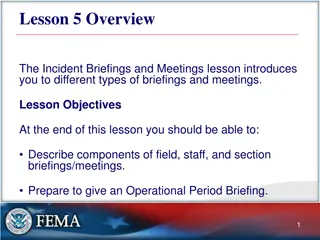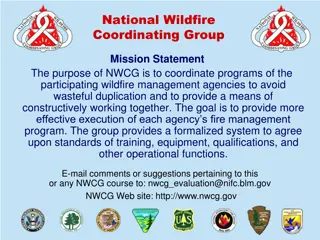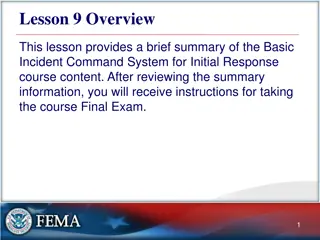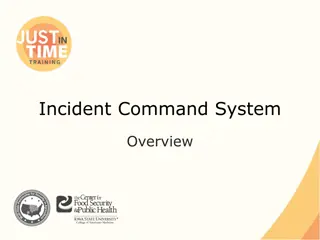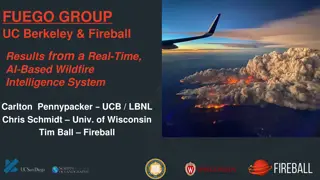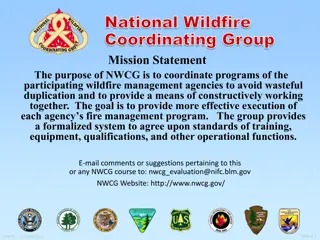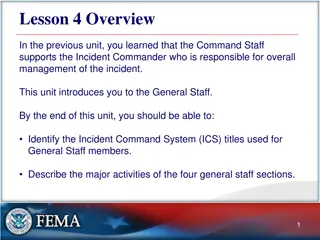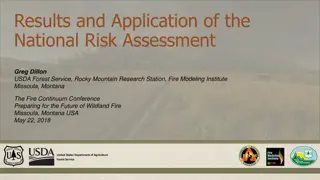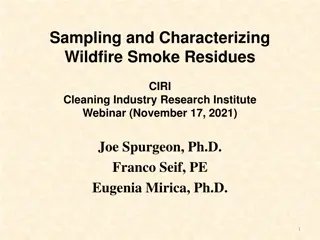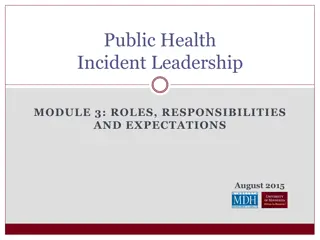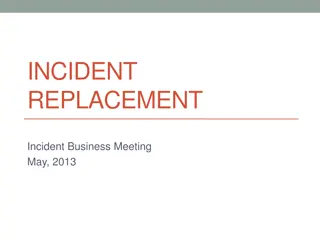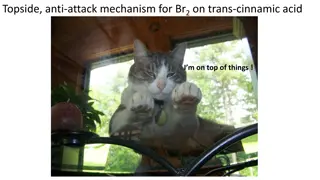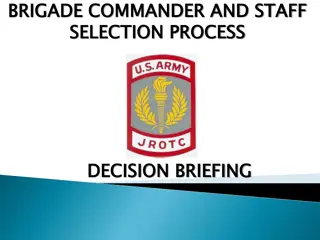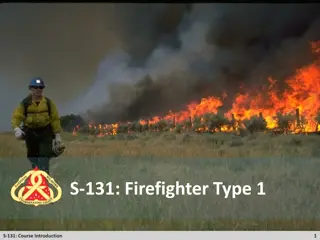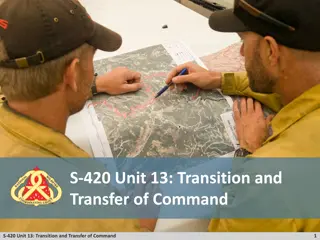National Wildfire Coordinating Group (NWCG) - S-200 Initial Attack Incident Commander Course Overview
NWCG aims to enhance coordination among wildfire management agencies to improve fire management program effectiveness. The S-200 course focuses on transitioning from Operations to Command roles, developing leadership skills, incident management, and evaluation techniques. Student evaluation includes simulation tasks, peer reviews, self-evaluation, and a final exam. The course covers ICT4 level skills and characteristics per interagency standards.
Download Presentation

Please find below an Image/Link to download the presentation.
The content on the website is provided AS IS for your information and personal use only. It may not be sold, licensed, or shared on other websites without obtaining consent from the author.If you encounter any issues during the download, it is possible that the publisher has removed the file from their server.
You are allowed to download the files provided on this website for personal or commercial use, subject to the condition that they are used lawfully. All files are the property of their respective owners.
The content on the website is provided AS IS for your information and personal use only. It may not be sold, licensed, or shared on other websites without obtaining consent from the author.
E N D
Presentation Transcript
National Wildfire Coordinating Group Mission Statement The purpose of NWCG is to coordinate programs of the participating wildfire management agencies to avoid wasteful duplication and to provide a means of constructively working together. The goal is to provide more effective execution of each agency s fire management program. The group provides a formalized system to agree upon standards of training, equipment, qualifications, and other operational functions. E-mail comments or suggestions pertaining to this or any NWCG course to: nwcg_standards@nifc.blm.gov NWCG Website: http://www.nwcg.gov/ 00-1-S200-EP
S-200 Initial Attack Incident Commander Unit 0 Introduction Unit 0 00-2-S200-EP
Welcome to S-200 Introductions Instructors Students Unit 0 00-3-S200-EP
Administrative Information Announcements Agenda Course Materials Student Course Evaluation Unit 0 00-4-S200-EP
Course Intent The intent of this course is to provide students with the tools and techniques to make the transition from Operations (Single Resource Boss) to Command (Type 4 Incident Commander). Unit 0 00-5-S200-EP
Course Objectives Demonstrate effective foundation skills (leadership, risk management, and communications) at the ICT4 level. Gather and document essential information about the incident. Size up the incident, develop plan of action. Unit 0 00-6-S200-EP
Course Objectives Manage the incident through effective leadership. Demonstrate the ability to evaluate plan of action and make adjustments to the plan when necessary. Conduct post fire activities. Unit 0 00-7-S200-EP
Evaluating Student Performance Student Evaluation includes four parts 1. Simulation Task Book 2. Peer-reviewed through AAR 3. Self evaluation 4. Final Exam Unit 0 00-8-S200-EP
ICT4 Characteristics The following is from the Interagency Standards for Fire and Aviation, Chapter 11 (red book). Ad hoc organizations managed by a Type 4 I.C. Primary local resources used. Unit 0 00-9-S200-EP
ICT4 Characteristics ICS Command and General Staff positions are not activated. Resource vary from single resource to multiple resource task forces or strike teams. Incident usually limited to one operational period in the control phase. Mop up may extend into multiple operational periods. Unit 0 00-10-S200-EP
ICT4 Characteristics Written IAP not required. A documented operational briefing will be completed for all incoming resources. Refer to the IRPG. Unit 0 00-11-S200-EP
Duties and Responsibilities The course is based on the tasks in the ICT4 Position Task Book (PTB). Unit 0 00-12-S200-EP
